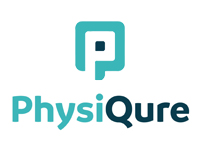What is tailbone pain? You may have heard of it or know someone who has suffered from it, the problem is a bit tough to describe as there are no specific bones that act as the tail. The actual problem is caused by stress placed on the tailbone.
This stress could be the result of a sudden or gradual increase in weight or the movement of the joint. For many people tailbone pain is something that comes and goes, but for others it becomes an ongoing problem which takes a long time to cure.
The area of the bone that touches the tailbone is called the tailbone and it can be a bit tough to describe, but if you think about it you will probably get some idea. Most doctors will not recommend any treatment for a tailbone problem unless it is an acute one and affects the ligaments of the tailbone. This can be as a result of a fracture of the tailbone, infection or a spinal cord injury.
More severe problems may require surgery or other more drastic treatments which will have long term effects on the spine.
Tailbone pain usually first presents itself as a pain or ache in the back which then radiates down the back of the leg. This may seem strange or unconnected to the tailbone but it is a fact that most back pains are connected to tailbones. This can be a result of a lack of weight, particularly where the tailbone is concerned, or from a sudden or traumatic accident. It may also be the result of an injury such as a road traffic accident or a fall. The pain will normally subside over a few days and may even go away completely.
In some extreme cases or for more severe problems, physiotherapy may be required to help heal and repair the tailbone. As with any injury to the spine, treatment will depend on the severity of the pain, the cause of it and your general health. Painkillers and steroid creams will be prescribed by your doctor and if these are not effective or if the pain persists, your doctor may recommend an operation to remove the tailbone or implants if the damage is serious enough.
If you are young, your tailbone may heal without any intervention, but if you are old, physiotherapy and exercise will definitely help to strengthen the ligaments and muscles surrounding the injured area and to prevent it from getting injured again.
Physiotherapy can help treat common lower back pain caused by tailbone pain or from tailbone related injuries such as a road traffic accident. Tailbone pain can be very difficult to diagnose and so often goes unrecognised and untreated. Your physiotherapist will carefully examine your back to identify the cause of the pain and then determine the best course of treatment. He will most likely use non-surgical measures to correct your problem, if it is severe enough and will advise you to go for surgery if other measures have been tried and failed.
Tailbone pain is very common and usually occurs after some type of trauma to the back such as lifting heavy objects incorrectly. A small amount of spinal inflammation may also occur after an accident, sports injury or sudden or unexpected deceleration of the body. Physiotherapy can help you identify the source of the pain and develop a suitable program of treatment. Tailbone pain is treatable and can be completely cured if it is identified and treated early.
